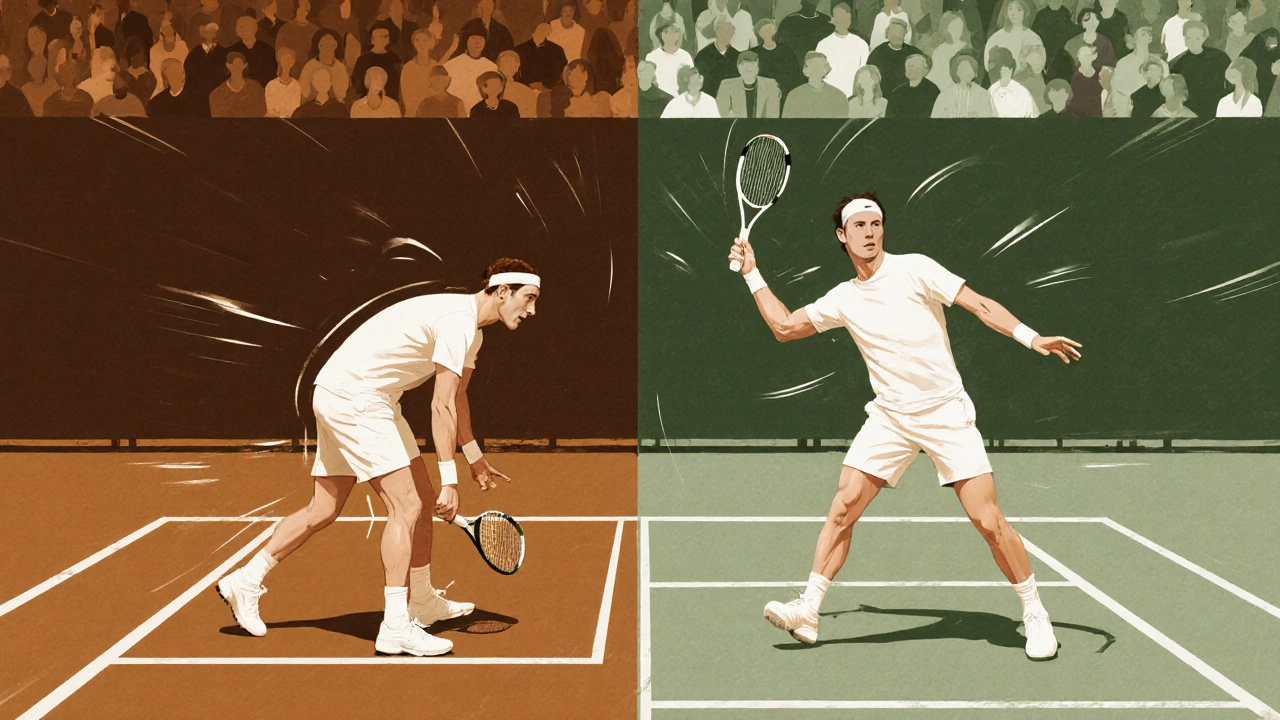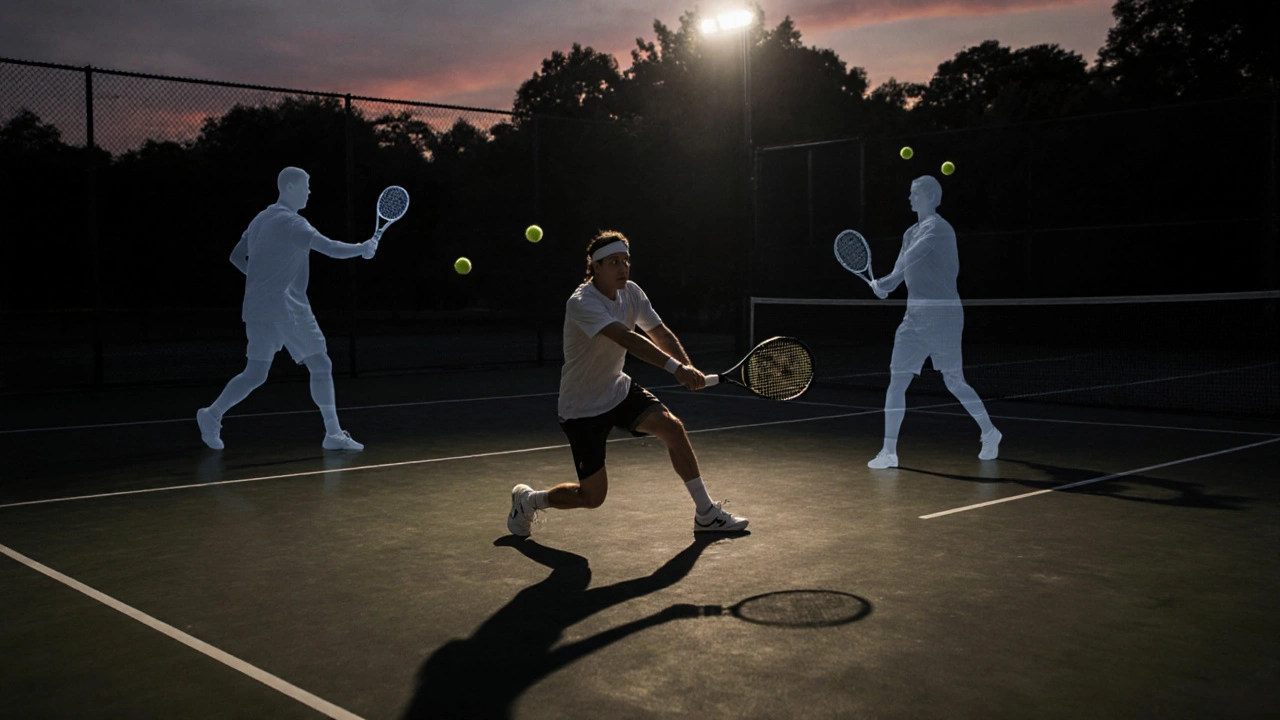What Is a 4.0 Level Tennis Player? Skills, Matches, and What Comes Next

Ever watched a local tennis tournament and wondered how someone went from barely returning serves to consistently winning matches? That jump often happens at the 4.0 level. It’s not just about hitting the ball hard-it’s about strategy, consistency, and knowing when to take control. If you’re wondering what separates a 4.0 player from a 3.5 or a 5.0, here’s the real breakdown.
What the NTRP Rating System Actually Means
The National Tennis Rating Program (NTRP) is the system used in the U.S. and many other countries to classify players from 1.0 to 7.0. A 4.0 player is considered an intermediate-advanced player. They’re not club beginners anymore. They’re not pros either. They’re the people who show up every weekend, play in leagues, and start winning more than they lose.
At 4.0, you can consistently hit groundstrokes with depth and direction. You’re not just rallying-you’re setting up points. Your serve is reliable, and you can place it to open up the court. Volleys are no longer a weakness; you can finish points at the net with confidence. You understand basic tactics: why you move forward after a short ball, when to approach, and how to use spin to control the pace.
What you won’t see yet? Consistent winners off both wings under pressure. You might still get pushed around on the backhand side. You might miss the occasional overhead. But you’re learning how to recover, not just react.
What a 4.0 Player Looks Like in a Match
Imagine you’re watching a 4.0 match. Both players are moving well. The rallies are longer than at 3.5. One player hits a deep cross-court forehand, pulling their opponent wide. The opponent scrambles, returns it short. The first player moves in-volley down the line-and wins the point. That’s a 4.0 point.
They’re not just waiting for their opponent to miss. They’re creating opportunities. They know how to use the entire court. They’ll fake a forehand and hit a backhand down the line. They’ll serve and volley on second serves. They’ll hit drop shots when the opponent is deep. They’re starting to read patterns.
At 3.5, you might win because your opponent double-faults. At 4.0, you win because you made them hit one more shot than they wanted to.
Typical Strengths and Weaknesses
Most 4.0 players have one strong wing-usually the forehand. That’s fine. But their backhand is often the weak link. It might be a one-hander that lacks depth, or a two-hander that’s inconsistent under pressure. You’ll see them retreat on the backhand side and try to survive.
Serving is another big differentiator. A 4.0 player can hit a first serve with pace and spin, and land it about 70% of the time. Their second serve is reliable, not just a toss-and-hit. They know how to mix in kick serves and slice serves to disrupt rhythm.
Net play is improving. They’re not afraid to come in, but they’re still learning when to stay back. They might over-approach on a deep ball and get passed. That’s normal. They’re learning to read the opponent’s shot selection before moving forward.
Footwork? It’s better than 3.5, but not automatic. They still have to think about where to step. They’re not yet moving with the fluidity of a 4.5 or 5.0. But they’re getting there.

How to Get to 4.0
If you’re stuck at 3.5, here’s what you need to change:
- Play more matches. Practice drills won’t get you there. You need to play against different styles-net rushers, baseliners, lobbers. Match play teaches you how to adapt.
- Work on your backhand. Don’t just hit it. Practice hitting it deep, with topspin, and down the line. Use a ball machine or a coach to force consistency.
- Learn to serve and volley. Even if you don’t do it often, practicing it makes you a better returner. You’ll start anticipating the serve better.
- Watch your footwork. Are you always late to the ball? Start taking small adjustment steps before the opponent hits. Don’t wait until the ball is in the air.
- Study your opponents. Are they weak on the backhand? Hit there. Do they struggle with low balls? Use slice. You’re not just playing tennis-you’re solving a puzzle.
What Comes After 4.0?
Once you’re solid at 4.0, the next step is 4.5. That’s where things get serious. At 4.5, players start hitting winners consistently. They have better court coverage. They can hit passing shots under pressure. Their serve becomes a weapon, not just a setup. They’re starting to play with rhythm and timing, not just effort.
Many 4.0 players plateau here. Why? Because they think more practice means more hitting. But the real jump comes from smarter play. You need to work on shot selection, court positioning, and mental toughness. You need to stop chasing every ball and start forcing errors.
Some 4.0 players join USTA leagues. Others play in local tournaments. Either way, they’re no longer just having fun-they’re competing. And that’s what makes the difference.

Is 4.0 Good Enough?
Yes. Absolutely.
Most recreational players never reach 4.0. It takes years of consistent play. If you’re a 4.0, you’re in the top 15-20% of all adult tennis players in North America. You can hold your own in club play, win local tournaments, and even compete in regional events.
You don’t need to be a 5.0 to enjoy the game. In fact, 4.0 is the sweet spot. You’re good enough to win, but not so good that you’re overwhelmed. You still have room to grow-and that’s what keeps you coming back.
Common Mistakes 4.0 Players Make
Even at this level, habits hold players back:
- Always trying to hit winners instead of placing the ball.
- Not moving to the net after a good approach shot.
- Ignoring the opponent’s tendencies-like always hitting to the backhand.
- Playing too defensively, waiting for the opponent to make a mistake.
- Not practicing volleys or overheads because they’re “not important.”
Fixing one of these can make you feel like you’ve jumped two levels overnight.
Final Thought: It’s Not About Power
The biggest myth about 4.0 tennis is that you need to hit harder. You don’t. You need to hit smarter. A well-placed shot that forces a weak reply is worth more than a 120 mph ace that lands in the net.
At 4.0, you’re learning to control the game-not just the ball. That’s what makes it satisfying. You’re not just playing tennis. You’re thinking it, reading it, and outplaying it. And that’s the real joy of the game.
Is a 4.0 tennis player considered advanced?
Yes. A 4.0 player is classified as intermediate-advanced. They’re beyond beginner and intermediate levels, capable of consistent rallying, strategic play, and winning competitive matches. Most recreational players never reach this level.
How long does it take to reach a 4.0 tennis rating?
It typically takes 3 to 5 years of regular play-about 2 to 3 times a week-with focused practice. Natural talent helps, but consistency matters more. Players who play matches regularly and work on weak spots improve faster than those who only do drills.
Can a 4.0 player compete in tournaments?
Yes. Many 4.0 players compete in USTA league play, local open tournaments, and senior events. These are structured competitions where players are grouped by rating. Winning at this level often comes down to consistency and strategy, not power.
What’s the difference between a 4.0 and a 4.5 player?
A 4.5 player has more consistency under pressure, better court coverage, and can hit winners from both wings. They use spin and pace more effectively, have stronger serves, and make fewer unforced errors. A 4.0 player is still developing these skills and may struggle against aggressive, well-placed shots.
Do I need a coach to get to 4.0?
No, but it helps. Many 4.0 players reach that level through self-coaching-watching matches, analyzing their own play, and practicing with purpose. A coach can speed up the process by identifying flaws you can’t see and giving you drills tailored to your weaknesses.

